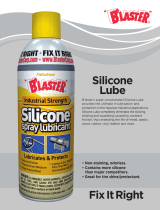INSTRUCTIONS FOR ENGINE PARTS REMOVAL
• BEFORE CAMSHAFT INSTALLATION
1. Disconnect battery.
2. For ease of installation, keep all parts in some sort of order.
WARNING: Do not remove radiator cap or radiator hose if engine is
hot.
3. Drain radiator coolant, move fan shroud back and remove fan and
spacer from water pump. Remove radiator and air conditioning
condenser if so equipped. In some cases, the front grille may have
to be removed. Measure distance from front cover to grille or
brackets that may interfere with camshaft against the length of the
camshaft.
4. Remove gas cap to relieve pressure. Disconnect fuel line at fuel
pump and plug. Replace gas cap.
5. Disconnect all linkage from carburetor such as throttle, throttle
springs, transmission, cruise control and automatic choke.
6. Tag and remove coil wires, sensor wires.and all vacuum lines.
7. Remove valve covers.
8. Remove distributor cap and wires, rotate engine until rotor points
towards number 1 terminal in cap and pointer on front cover is on
Top Dead Center (TDC) and remove distributor. Note the
approximate position of the vacuum advance canister in relation to
the manifold to assist in getting the distributor properly located
during re-installation.
9. Remove carburetor and intake manifold.
10. Remove rocker arms and pushrods. CAUTION: Rocker arms and
rocker arm pivots must be re-installed in their original positions.
11. Remove old valve lifters.
12. Remove crankshaft pulley and, using a suitable puller, crankshaft
dampener.
13. Loosen oil pan and remove water pump, fuel pump, and front cover.
NOTE: The front cover oil seal should be replaced before the front
cover is re-installed.
14. Rotate engine until timing marks are aligned as shown in Figure 2.
15. Remove cam sprocket bolts. Slide sprocket and timing chain
forward to remove.
16. Remove camshaft. Using appropriate gear puller, remove crank
sprocket.
• VALVE SPRINGS
CAUTION: WARNINGS ABOUT YOUR WARRANTY
In order for this Performer-Plus cam and lifter kit to be covered
under ANY WARRANTY you MUST use the correct Edelbrock Sure
Seat Valve Springs or original equipment equivalent. Failure to
install new Edelbrock valve springs or OE equivalent with your new
Performer-Plus cam could cause the cam lobes to wear excessively
and could cause additional engine damage.
1. This camshaft is designed to function with Edelbrock Sure Seat valve
springs #5812. Do not use dual valve springs with this camshaft.
Recommended installed height for these springs is 1.670".
2. If using stock valve springs, check and set spring height to factory
specifications for correct year and model
NOTE: Due to various settings throughout the years, we advise
checking Motors, Chilton, or Oldsmobile service manuals or correct
spring height for your vehicle.
• LIFTERS
1. New lifters must be used with a new camshaft. Use only the lifters
supplied with this kit.
2. Check to be sure that all lifters fit freely in the lifter bores.
• INSTALLATION INSTRUCTIONS
1. Coat cam lobes and bottoms of each lifter with MoS2 lube (supplied)
to prevent cam lobe and lifter wear from occurring during initial
start-up. Do not "pump up" lifters before installation!
2. Install new camshaft with new sprockets, timing chain and lifters.
CAUTION: Use Edelbrock Performer-Plus True Rolling Timing Chain
and Gear Set #7813. Do not use late model timing chain & gear
sets that are designed in a retarded position and are not
recommended for this camshaft installation. Edelbrock Timing Sets
feature three keyways for specific timing selection. Use locking
compound material on the bolt threads holding timing gear to cam.
Torque to factory recommendations specified in motor repair
manual.
Install camshaft with timing marks lined up as recommended by
factory specifications. See Figure 2.
When using Performer-Plus Timing Chain and Gear Set #7813 with
Edelbrock cam and lifter kits, straight up timing alignment is
achieved. If any other timing gear set is used, it is necessary to
check cam position for correct timing alignment. This requires
indexing the camshaft with a degree wheel to verify timing
alignment. O.E.M. or non-Edelbrock timing gear sets are not
recommended for use with Edelbrock camshafts.
• VALVE ADJUSTMENT
1. Turn the engine over until the No. 1 cylinder is at Top Dead Center
(TDC) on the compression stroke (both lifters will be at the bottom of
their travel in the lifter bores). Install both intake and exhaust
pushrods, rocker arms, rocker arm pivot, and rocker arm bolts.
Carefully tighten bolts while feeling pushrods for vertical clearance.
As soon as all vertical clearance is gone from pushrods, count
number of turns until bolts bottom out. There should be 1/2 to 1 full
turn of lifter pre-load. If vertical clearance exists after bolts bottom
out, longer-than-stock pushrods are required. Use 5/16" diameter
intake pushrods for big-block Chevrolets, which are approximately
.050" longer than Oldsmobile pushrods. They are available from GM
dealers (GM #14075629), TRW (#48099), or other pushrod suppliers.
If excessive lifter pre-load exists, use shims under rocker arm pivots
to achieve 1/2 to 1 turn pre-load.
2. The above procedure assures correct lifter pre-load. Repeat this
procedure for each of the other seven cylinders by rotating the
engine 90° and following the firing order (1-8-4-3-6-5-7-2).
3. Re-install front cover, fuel pump, water pump, and oil pan using new
gaskets.
4. Install intake manifold using new intake gasket set and torque
manifold bolts to 25 ft./lbs.
5. Install crankshaft dampener and torque to factory specs.
page 2
• INSTALLING PUSHRODS AND ROCKER ARMS
After the cam is installed and timed correctly (see Figure 2), it will be
necessary to check each pushrod for correct lifter pre-load. Before
installation, be sure to coat friction surfaces of pushrods, rocker
arms and pivots with a suitable lubricant such as motor oil or
assembly lube.
©2009 Edelbrock Corp. Rev. 9/09 - AJ/mc
Part #3712 Brochure #63-3712





